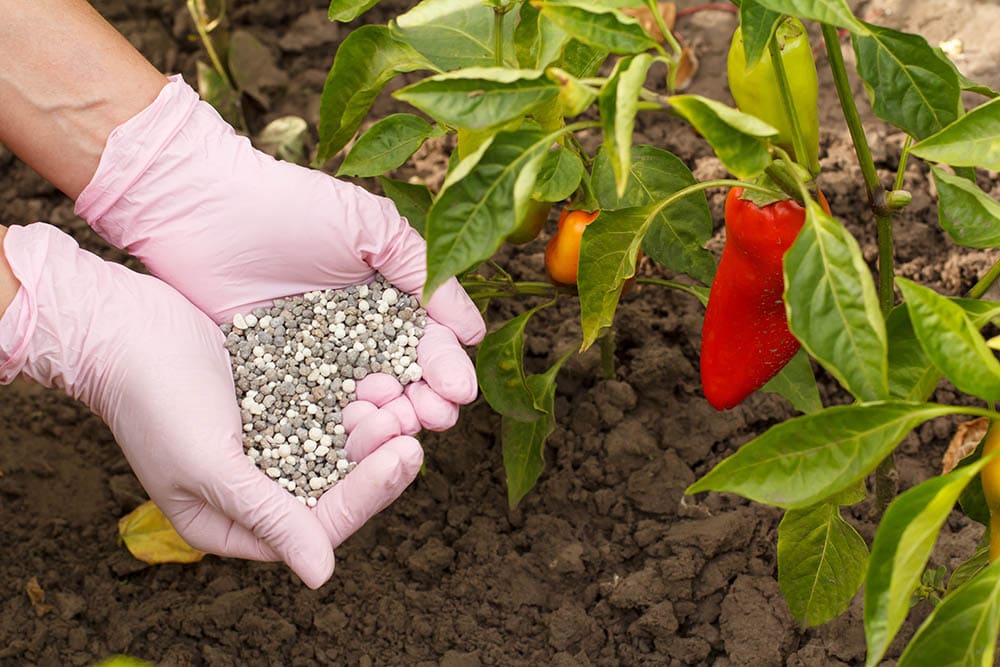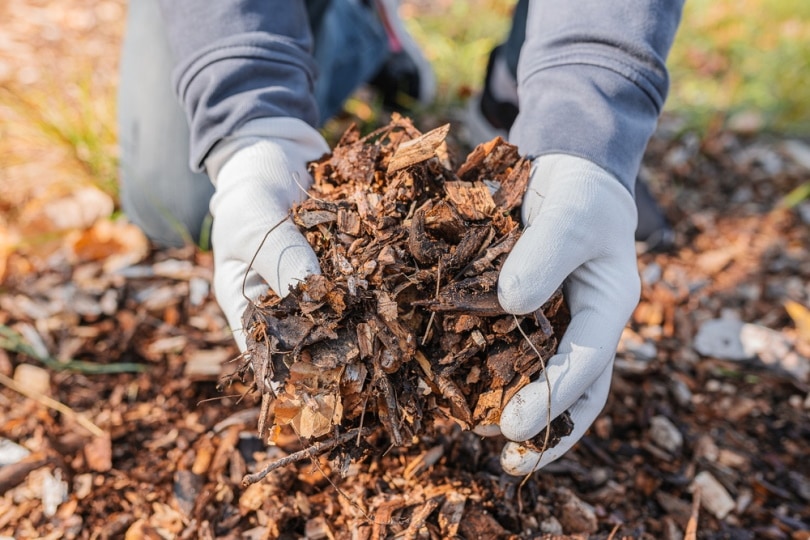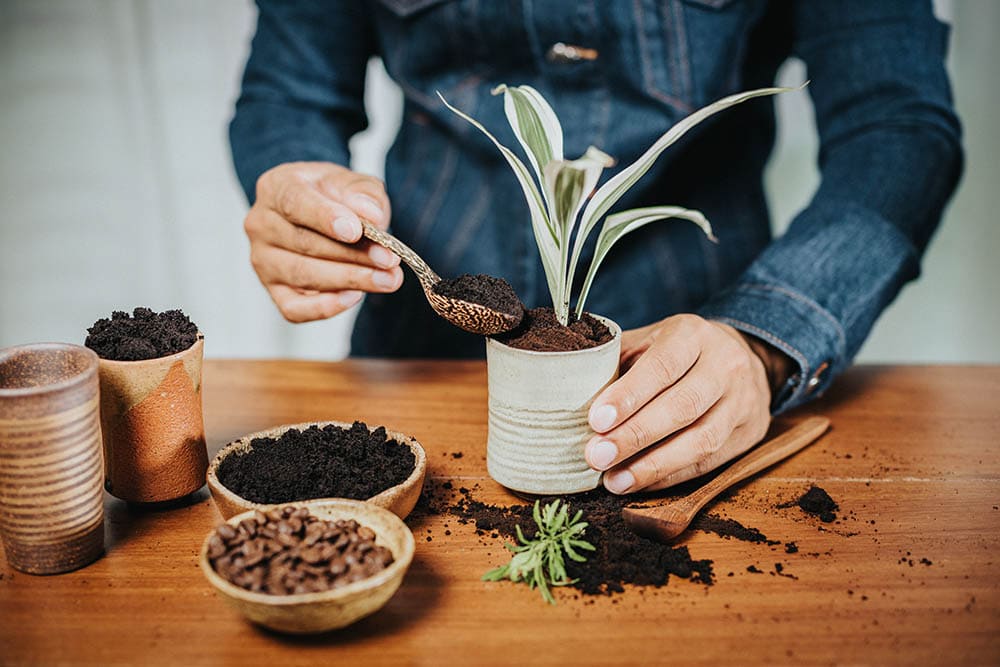How to Fertilize Plants: 7 Tips & Tricks
-
Shea Cummings
- Last updated:

Water and sunlight are two critical things your plants and grass need to grow. However, fertilizer is another thing they need that is often overlooked. Fertilizing your plants’ soil is a huge factor and how well they thrive.
This article explores eight tips and tricks for maximizing your returns on plant and grass fertilizing. Plus, we’ve included a section on the different types of fertilizer and how to choose the best one for your garden and lawn.
The 7 Tips & Tricks to Fertilize Plants
1. Natural Fertilizer
Hydrated magnesium sulfate, more commonly known as Epsom salt, is a fantastic natural fertilizer. Because it contains magnesium, it boasts several unique benefits to your garden: increased nutrient absorption, easier seed germination, and increased chlorophyll production.
You can sprinkle it in the soil, but a great way to make it go further is by diluting it in water. A good ratio is two tablespoons in 1 gallon of water per month. Another option is to dilute it in a spray bottle and apply it directly to the plant. This aids in its growth and vegetables and roses benefit greatly from the misting.

2. PVC Pipe for Those Hard-to-Reach Areas
Fertilizing isn’t typically a one-and-done thing. If you’ve got a lot of dense plants in your garden, it can be hard to get to the soil and apply fertilizer. One great option is using a chunk of PVC. 2 or 3-inch PVC works great, and cutting the top at a 45-degree angle creates an easy opening for pouring your fertilizer into.
3. Budget Soil Amendment
A critical component to maximizing your garden’s health is paying attention to the pH level in the soil. If the pH level gets too low, the soil is more acidic. Some plants are susceptible to damage from the soil’s pH level.
Before you plant in the soil, sprinkle some baking soda and mix it in. Then give it a good watering to disperse it. This will improve your soil pH level at a fraction of the cost compared to other soil amendments you can buy.

4. One Last Fertilizing
You’ll typically want to fertilize your garden and lawn several times throughout the year, especially if you have a longer growing season. However, this isn’t always possible or practical. But if you still want to give your lawn and garden their best shot at success, fertilize in the fall.
For your lawn, you’ll want to fertilize around three weeks before your final mow for the year. This ensures that your grass gets a boost of nutrients that it can store over the winter as it goes dormant. And when the snow melts, it gets a growth boost.
For the garden, similar rules apply. The soil is ready for those early annuals you want to plant the next spring, and your perennials have a boost of nutrients before the snow flies.
5. Leaf Mulch Fertilizer
If you’re like many people, raking up the fallen leaves from your lawn is not your idea of a good time. Investing in a mulching kit for your lawnmower may be the answer to your dislike of raking. Instead of spending that time, simply mow your leaves, and the mulching blades break them up into tiny pieces after a few passes. This fresh mulch falls into the soil of your lawn and acts as a natural fertilizer as the pieces decompose.

6. Compost and Mulch
Using compost and mulch in your garden gives the soil a massive nutrient boost. If you’re only growing flowers and other non-edible plants, there’s no real limit on the type of mulch or compost you can use. However, suppose you’re growing vegetables or anything you plan to eat. In that case, you’ll want to make sure you use compost formulated for vegetables. If you’re using your own, make sure there wasn’t any animal waste added during the decomposition.
7. Paying Attention to Plant and Grass Needs
Both plants and grass have changing fertilization needs. For example, you likely have two lawns, one that gets sun all day and one that only gets a few hours. The shaded lawn will need less water and fertilizer because it won’t use its nutrients as quickly, and the opposite is true for the full-sun lawn.
Plants are the same way. Depending on factors like the sun, their needs may change. In addition, different plants simply need more nutrients than others. For example, annuals like vegetables, roses, or hydrangeas need a lot of nutrients for rapid growth. Whereas something like a tree, shrub, or other perennials won’t be as demanding. So, they’ll need less fertilizing.
Picking the Right Fertilizer
It’s important that you get the right fertilizer for your soil. Because if you load it up on one particular nutrient, the soil won’t be any healthier.
- Nitrogen: This benefits the foliage and increases growth.
- Potassium: This encourages big, healthy blooms on your flowers.
- Phosphorus: This helps develop strong root systems in your plants.
A general-purpose fertilizer typically has these in average or standard ratios. However, if you purchase a specialized product, the fertilizer will be formulated with specific mixtures for certain plants.

Types of Fertilizer
There are three main types of fertilizer that most people use. Which one you use mostly boils down to personal preference.
- Liquid: A liquid fertilizer is diluted with water and applied with a watering can or put in a canister on your garden hose.
- Granular: Granular is one of the most common for outdoor plants. You mix the granules into the soil, and they dissolve.
- Slow-Release: This fertilizer is similar to granular, except the granules are covered in a coating that dissolves over time to continually fertilize the soil. They are growing in popularity as they allow the gardener to have a more hands-off approach.
Conclusion
A general-purpose fertilizer is fine in most cases and will provide the nutrients your plants need. However, purchasing a soil testing kit may be a good idea if you want to take your gardening to the next level. Then you can buy a fertilizer that’s formulated in a way that will provide the most benefit to your garden or lawn.
See also: What Are the Best Mulches for Grass Seed? 6 Great Options
Featured Image Credit: Simon Kadula, Shutterstock
Contents

